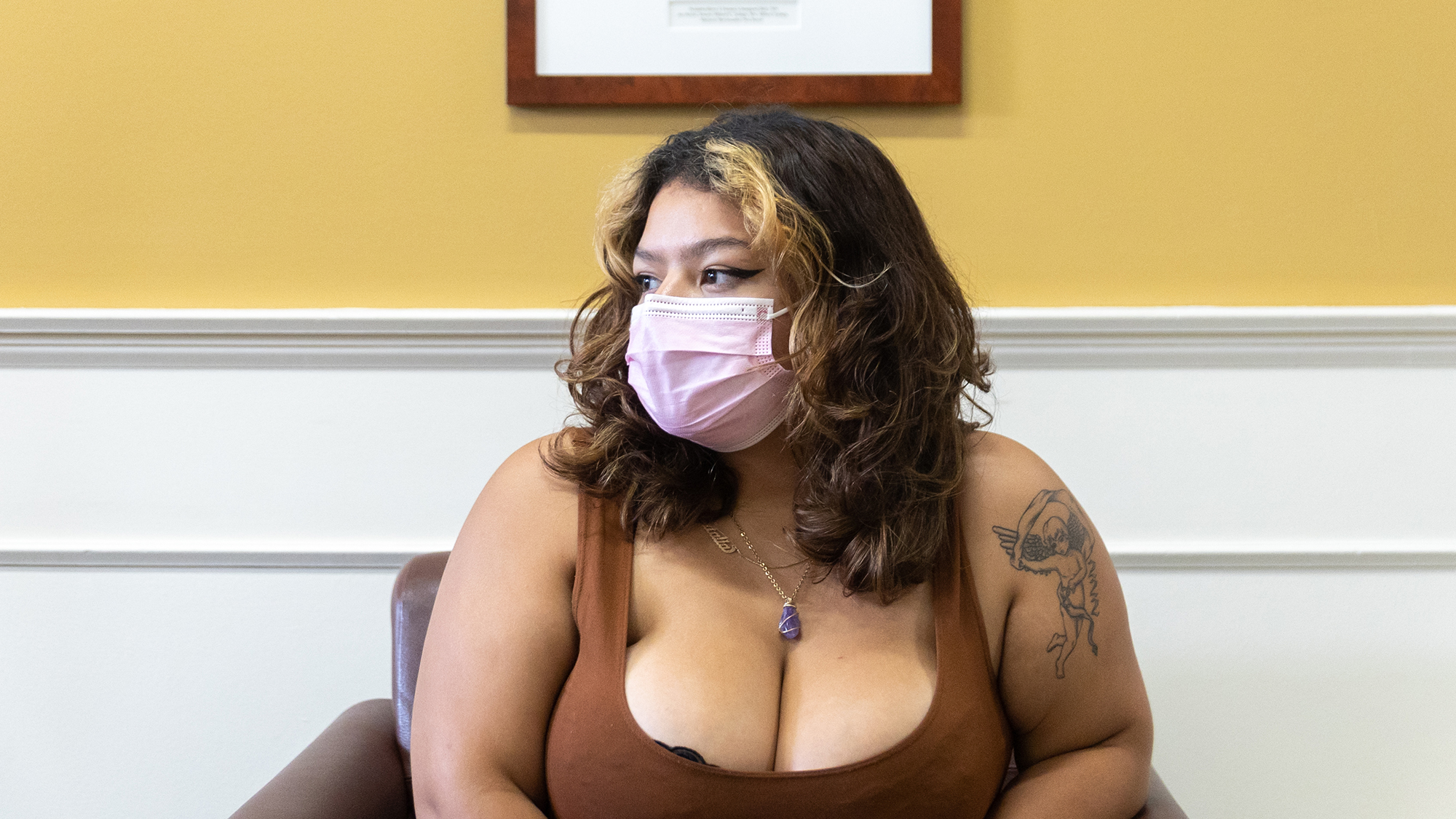Para leer este artículo en español, haga clic aquí.
By Joelle Anselmo and Hannah Ziegler
Staff Writers
While many University of Maryland students have celebrated the transition back to in-person classes and bustling campus life, some students are still feeling uncertain and anxious.
After more than a year of Zoom classes, some students have struggled to adjust to the return of crowded public spaces and dozens of masked social interactions each day. This adjustment, paired with the still-looming pandemic, has made the highly-anticipated “return to normal” out of reach for some students.
Kevin Hrozencik, a sophomore enrolled in letters and sciences, has had trouble navigating the increase of in-person interactions his classes have spurred.
“It just feels so weird to come out the other side [of the pandemic] and start trying to talk to people,” Hrozencik said. “It’s like walking in the desert without a compass.”
As a fall 2021 transfer student from Towson University, he had trouble balancing social burnout and meeting new people.
“I need to … decompress from being overwhelmed with the sheer number of people outside,” Hrozencik said. “But I’m also like … ‘Why can’t I just go out and make hundreds of friends?’’”
Andrea Chronis-Tuscano, a psychology professor at this university, said students should not worry about whether their comfort zone is different from that of their friends.
“We’re all different … Even though it’s easy to compare yourself to others, we all have our own comfort zone,” Chronis-Tuscano said. “It’s okay if we don’t feel comfortable going to that outdoor party, even if maybe a student’s roommate feels okay with it. It’s okay to make our own choices based on what our comfort level is.”
[Maryland Images returns to in-person campus tours starting this fall]
Senior information science major Alexander Smead said the university could relieve some student anxieties by offering both in-person and online classes.
“There should be an option for everyone because if someone is more scared about corona or has parents who are really old,” Smead said. “Everyone should be able to make their own choice about how much they are being exposed to.”
This university’s counseling center said in an email that it is working closely with “those who are most vulnerable to complications from COVID-19” by offering disability accommodations and requests for flexibility in partnership with the University Health Center.
Chronis-Tuscano thinks many students reacted differently to the return of in-person interactions due to the rising COVID-19 cases on this university’s campus. Some students may have approached the school year with excitement but faced heightened anxiety after receiving an email that someone in their class tested positive for COVID-19, she added.
“I got that first email, and I was like, ‘Oh no, things are not back to normal,’” Chronis-Tuscano said. “Even among the students in my large lecture class, I just sense this anxiety that I don’t remember being there before.”
Some students, such as junior accounting major Varen Gupta, are excited about returning to in-person instruction but have still voiced concerns about COVID-19 safety on the campus.
“I could be home. I could be safe in my own environment where I don’t have to worry about others except keeping myself safe and keeping the people around me in my household safe,” Gupta said.
[UMD SGA discusses three bills aiming to improve community health]
The return to in-person campus life has also posed challenges for commuter students to this university. Natalia Portillo, a junior English major, said her anxiety was heightened by simple things, like how much preparation it takes to leave for class.
She added that the pandemic made her commuter situation easier. Portillo could be with her comfort dog and do school from her bed without having to worry about rushing out the door each morning or beating traffic.
Alana Colón, a senior studio art major, commutes about one hour from Waldorf to the campus each day. During the pandemic, she found virtual learning allowed her to finish lectures in 30 to 45 minutes without leaving her house.
“If I’m only coming for 45 minutes, my drive is longer than that lecture,” Colón said. “It’s just a big waste of time.”
Since Colón has a “digital-based” major, where most assignments are done and turned in virtually, she thinks she should not have in-person lectures all the time.
“If it’s just me sitting there, watching [a professor] playing videos on YouTube … hearing a professor talk, it’s quite useless to me,” Colón said.
Colón said it was “jarring” to see so many people back on campus with friends.
A lack of in-person interaction, combined with Colón’s obsessive-compulsive disorder, made her feel “frazzled” at what the return to normal this semester would bring, she said. She has seen many other students voice the same concerns on social media.
“There’s a part of me that’s like, ‘Okay, it’s not just me,’ but another part of me that’s like, ‘Huh, I wonder why,’” Colón said.



